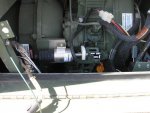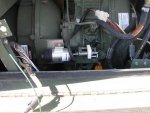coyotegray
Member
- 492
- 10
- 18
- Location
- Oklahoma City
My two 3KW generators are Yanmar conversions and do not have a manual throttle.
A push solenoid takes it to full throttle and then retracts fully when the set it turned off.
I would like to install a manual throttle adjustment and the easiest way would be to limit how far the solenoid is allowed to travel.
Would this create any problems with the solenoid, if I keep if from full travel..?
Thanks,
Andy.
A push solenoid takes it to full throttle and then retracts fully when the set it turned off.
I would like to install a manual throttle adjustment and the easiest way would be to limit how far the solenoid is allowed to travel.
Would this create any problems with the solenoid, if I keep if from full travel..?
Thanks,
Andy.




